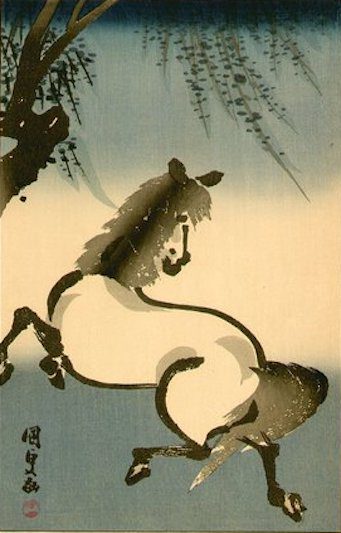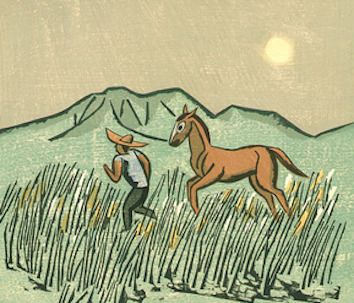Japan Art and Horses (Zen Buddhism)
Lee Jay Walker
Modern Tokyo Times

The stunning print of a horse and sled by Kawano Kaoru (1916-1965) highlights the independent spirit of this esteemed individual.
His early childhood during the Taisho Period (1912-1926) impacted his thought patterns. Kawano belongs to the sosaku hanga (creative prints) movement that enabled individualism and creativity to a higher degree – within the traditional settings of printmaking during the Edo Period.

Aoyama Seizan (print above) produced amazing Zen-style horses in the 1920s and 1930s. However, little is known about this unique individual.
He understood the Mystic Law of the Lotus Sutra. Henceforth, his art pieces of horses pertain to a different law of movement that transcends reality.

Nichiren said, “Life is indeed an elusive reality that transcends both the words and concepts of existence and nonexistence. It is neither existence nor nonexistence, yet exhibits the qualities of both. It is the mystic entity of the Middle Way that is the ultimate reality. Myo is the name given to the mystic nature of life, and Ho, to its manifestations. Renge, which means lotus flower, is used to symbolize the wonder of this Law. If we understand that our life at this moment is Myo, then we will also understand that our life at other moments is the Mystic Law.”
The final print is by Maekawa Senpan (1888-1960). He studied oil painting under Asai Chū and other instructors at the Kansai Art Academy. However, Maekawa moved on to the sosaku hanga (creative prints) artistic movement.

Modern Tokyo News is part of the Modern Tokyo Times group
http://moderntokyotimes.com Modern Tokyo Times – International News and Japan News
http://sawakoart.com – Sawako Utsumi’s website and Modern Tokyo Times artist
https://moderntokyonews.com Modern Tokyo News – Tokyo News and International News
PLEASE JOIN ON TWITTER
https://twitter.com/MTT_News Modern Tokyo Times
PLEASE JOIN ON FACEBOOK